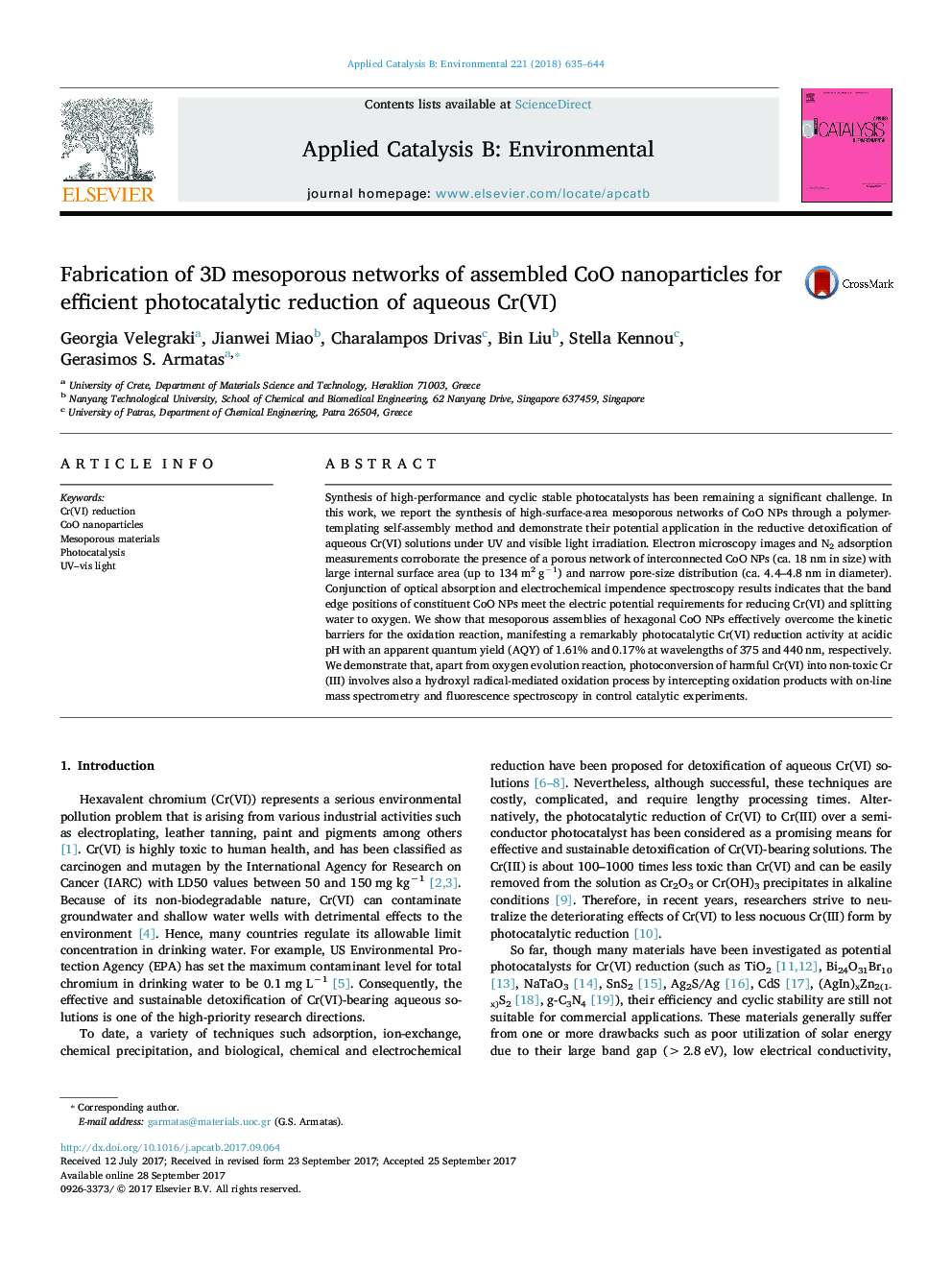| کد مقاله | کد نشریه | سال انتشار | مقاله انگلیسی | نسخه تمام متن |
|---|---|---|---|---|
| 6453517 | 1418799 | 2018 | 10 صفحه PDF | دانلود رایگان |

- High-surface-area mesoporous networks of connected CoO NPs (MNAs) are prepared.
- CoO nanomaterials demonstrate Cr(VI) reduction activity without additional electron donors.
- Assemblies of h-CoO NPs attain a 1.61% AQY at 375Â nm for Cr(VI) photoreduction.
- A synergistic detoxification of Cr(VI) and photooxidation of phenol is also observed.
- The reaction path proceeds via a OH-mediated oxidation and an oxygen evolution pathway.
Synthesis of high-performance and cyclic stable photocatalysts has been remaining a significant challenge. In this work, we report the synthesis of high-surface-area mesoporous networks of CoO NPs through a polymer-templating self-assembly method and demonstrate their potential application in the reductive detoxification of aqueous Cr(VI) solutions under UV and visible light irradiation. Electron microscopy images and N2 adsorption measurements corroborate the presence of a porous network of interconnected CoO NPs (ca. 18Â nm in size) with large internal surface area (up to 134Â m2Â gâ1) and narrow pore-size distribution (ca. 4.4-4.8Â nm in diameter). Conjunction of optical absorption and electrochemical impendence spectroscopy results indicates that the band edge positions of constituent CoO NPs meet the electric potential requirements for reducing Cr(VI) and splitting water to oxygen. We show that mesoporous assemblies of hexagonal CoO NPs effectively overcome the kinetic barriers for the oxidation reaction, manifesting a remarkably photocatalytic Cr(VI) reduction activity at acidic pH with an apparent quantum yield (AQY) of 1.61% and 0.17% at wavelengths of 375 and 440Â nm, respectively. We demonstrate that, apart from oxygen evolution reaction, photoconversion of harmful Cr(VI) into non-toxic Cr(III) involves also a hydroxyl radical-mediated oxidation process by intercepting oxidation products with on-line mass spectrometry and fluorescence spectroscopy in control catalytic experiments.
289
Journal: Applied Catalysis B: Environmental - Volume 221, February 2018, Pages 635-644